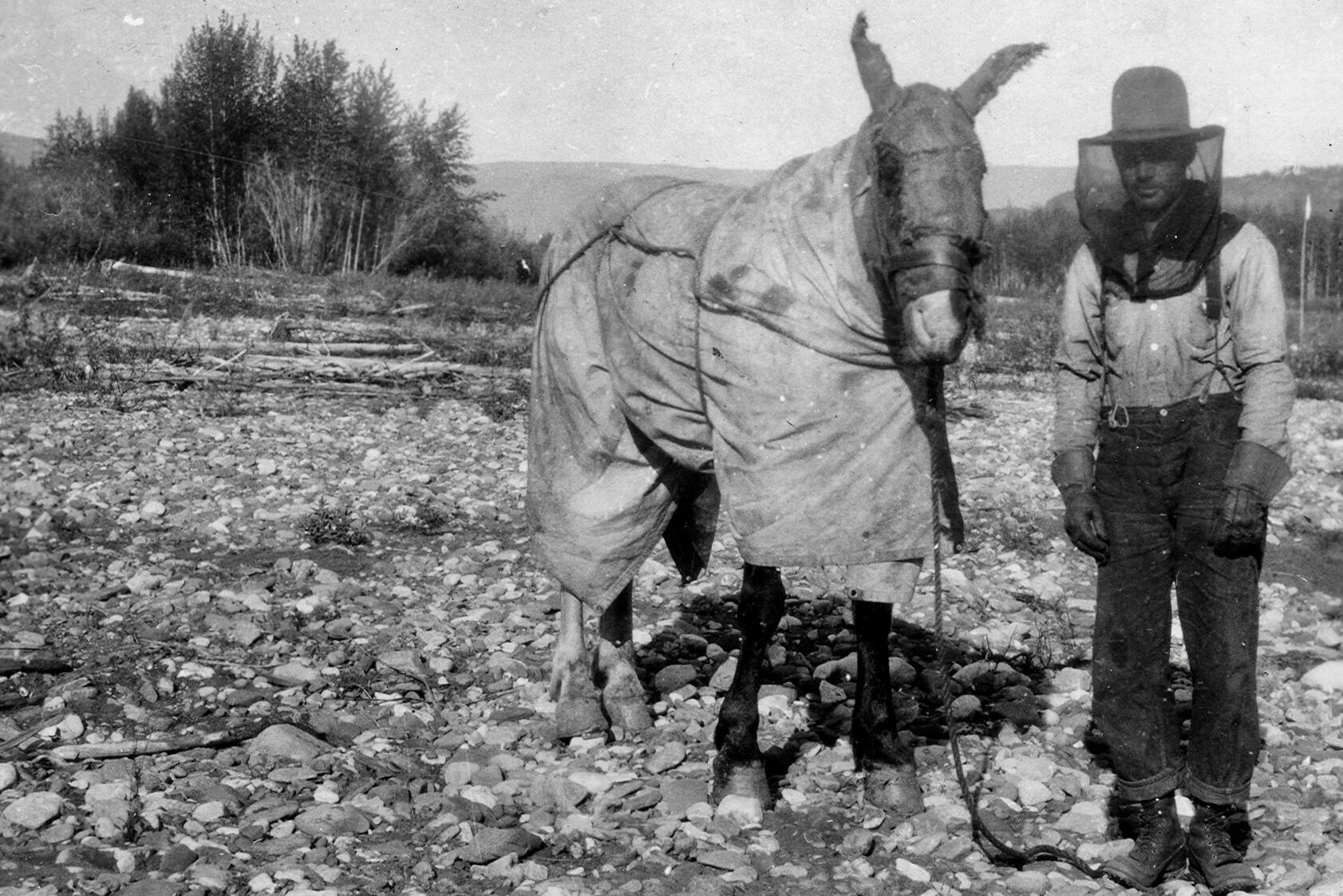In mid-June, while standing deep within the northern boreal forest, it’s possible to feel a sensation similar to one felt in mid-December at the same spot. It’s a sting to exposed skin, delivered in December by bitter air and in June by the stab of the mosquito.
The mosquito has buzzed its way into most historic journals of Alaska summer visitors. Like that of Ivan Petrof, who counted 33,426 Alaskans while traveling the territory for the 1880 census. He wrote of what he encountered in the Kuskokwim River valley:
“There is another feature in this country which, though insignificant on paper, is to the traveler the most terrible and poignant infliction he can be called upon to bear in a new land. I refer to the clouds of bloodthirsty mosquitoes … under the stress of whose persecution the strongest man with the firmest will must either feel depressed or succumb to low fever.”
About 20 years later, during a military exploration of the Copper River Valley, Army Lt. J.J. Rafferty described the days of June 9-13, 1898:
“The men were compelled to wear veils day and night, with gloves to protect the hands. The ferocity of these mosquitoes I regard as something remarkable. The species found here is not the large, singing sort seen in the States, but a small, silent, business-like insect, sharp of bill, who touches the tender spot in a surprisingly short time after alighting.”
Alaska hosts at least 27 species of mosquito. The “snow mosquito” Culiseta alaskaeensis is a thumbnail-size insect that in autumn wafts down to the forest floor. There, it hibernates until its bunker warms in spring, when it ascends.
By mid-June, the larger snow mosquitoes have lived out their few weeks of life. But the artful dodgers that Lt. Rafferty wrote about are plentiful. Many of those smaller mosquitoes emerged from eggs that females laid last fall. Mother mosquitoes either dabbed the eggs upon a water surface or placed them on the ground in areas that might be flooded by spring snowmelt.
Mosquitoes live in water during their wriggling larval and pupal stages. That’s one of the reasons most of the vastness of Alaska, with its magnificent swamplands, is excellent mosquito habitat.
“(Water enough for mosquito rearing) may be in a small tin can or a vast tidal marsh,” wrote an unnamed scribe in the 1961 U.S. Department of Agriculture publication “The Mosquitoes of Alaska.”
Upon emergence from the water as adults, clouds of male mosquitoes seek out females. Mating takes place in mid-air. Male mosquitoes lack the surprisingly complex needle-like proboscis of the females. Instead they sport a pair of garish feathery antennae.
While both males and females eat plant nectar, mated female mosquitoes follow invisible trails of carbon dioxide exhaled by animals like us, as well as molecules of body odor. Blood protein, one of the richest foods in existence, helps make their eggs viable.
Once those blood-nourished eggs hatch, the numbers get a bit goofy. Derek Sikes, curator of insects at the University of Alaska Museum of the North, once calculated that about 17,489,393,939,393 mosquitoes hover over Alaska each summer. Yes, that’s 17 trillion. Sikes did not weigh each one individually, but he calculated that the combined weight of Alaska’s yearly mosquito crop is 96 million pounds.
• Since the late 1970s, the University of Alaska Fairbanks’ Geophysical Institute has provided this column free in cooperation with the UAF research community. Ned Rozell is a science writer for the Geophysical Institute.

